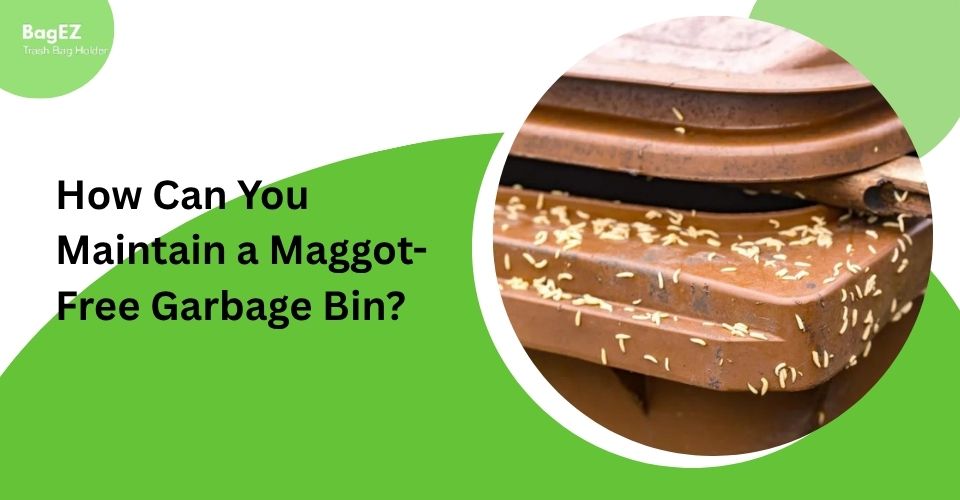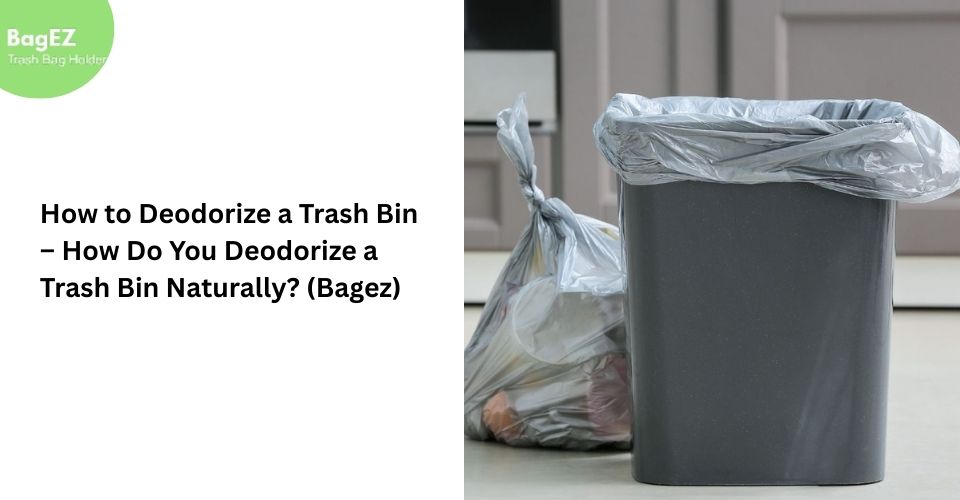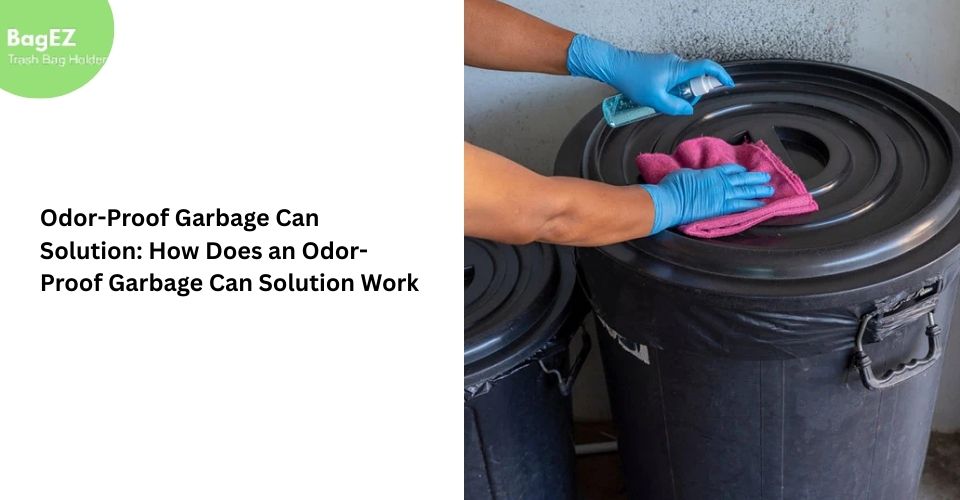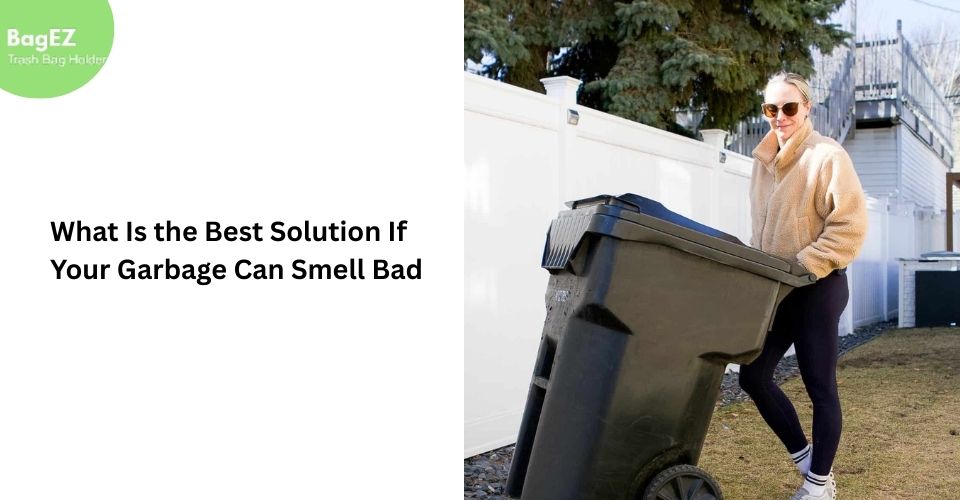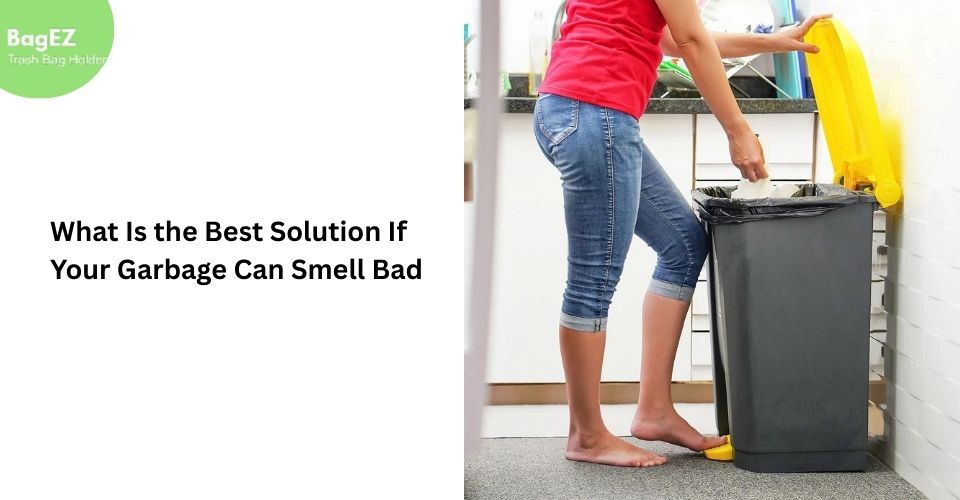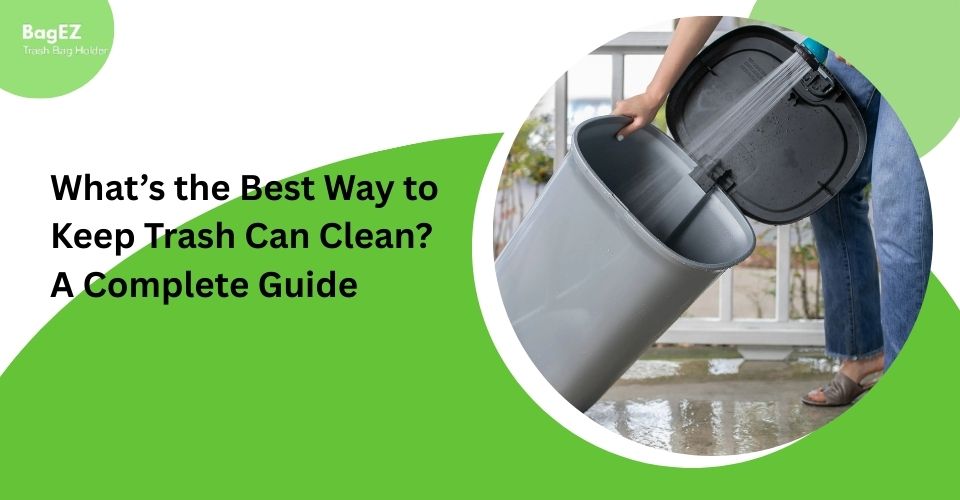Having a Maggot-Free Garbage Bin is an important aspect of household hygiene, particularly in the warmer seasons. Maggots are the larvae of the common house flies, which are laid on rotting food wastes. The ideal environment is a garbage bin whose warm, moist, and smelly atmosphere is an ideal breeding environment. Maggots are not only unsightly but also disgusting and they depict poor sanitation, which encourages more pests and flies.
The best part is that it is quite easy to keep your bin clean, and you need to work on two key strategies to do it: getting rid of the attraction (moisture and odors) and keeping the environment always clean.
Understanding the Problem: Why Flies Choose Your Trash Bin

The first step in keeping a Maggot-Free Garbage Bin is to learn the lifecycle and motivation of the common housefly. The flies are attracted to the rotting organic waste in your bin both as food and because it offers the flies an ideal nursery for their young ones.
The entire process is remarkably fast:
-
Attraction:
Flies find your bin by smelling the strong odors of rotting food, meat scraps, and other organic waste. This decomposition is accelerated by heat and therefore summer months are the most active when it comes to infestations.
-
Egg Laying:
One female fly may lay up to 150 eggs simultaneously, most of them being laid in a batch directly onto the food waste.
-
Hatching:
Under warm temperatures these eggs may hatch into tiny maggots within 8 to 20 hours.
-
Feeding and Growing:
The maggots spend several days feeding on the garbage, and grow quickly.
The last, but crucial ingredient is the presence of moisture. Wet garbage provides the ideal slimy condition in which the eggs will hatch and the maggots will grow. So, the key defense in keeping off maggots is to be very vigilant of odor and moisture in garbage.
Immediate Action: How to Eliminate an Existing Maggot Infestation
When you have opened your lid to see a twitching mass, do not panic. The trick is that you should kill the maggots as soon as possible and then clean and sanitize the container. This is the only means that will efficiently result in a bin that is free of these pests after an infestation has set in. It is always advisable to wait until the day after you have had your trash collection and then begin the clean up process.
Kill the Maggots Safely and Effectively
-
Boiling Water:
This is the fastest solution. Slowly pour one or two kettles of boiling water on the maggots. They are killed by the heat almost immediately. Do not use bins of plastic because the heat can cause slight warping.
-
Salt or Lime:
Over the maggots sprinkle abundantly and thickly with table salt or garden lime. The salt is used to dry and basically kill the larvae, particularly when it is used together with sunlight.
-
Diatomaceous Earth (DE):
This is a non-toxic natural powder that is made of fossilized algae and is fatal to maggots. Apply evenly to the affected areas. It functions by absorbing maggots outer fats and oils making them dehydrated.
Deep Clean and Disinfect Your Bin
-
Empty and Rinse:
When the maggots have died, get rid of them. Rinse out all the residue, debris and the slimy film left behind by the maggots with a garden hose.
-
Scrub and Sanitize:
Wipe the inside and outside of the bin with hot water and a brush having a lengthy handle using soap. To get deeper clean, take one part bleach to ten parts water or a strong disinfectant spray and be sure that every surface gets scrubbed.
-
Dry Completely:
When it is rinsed, the bin must be thoroughly dry. The best way to make it so all the moisture evaporates is to leave it upside down in the sun and this will make sure that there will be no mold and it will also be removing a prime fly attractant.
Waste Management Strategies for Preventing Maggots
The best way of keeping a bin pest-free is to cut off the food and moisture the flies require to breed. This involves altering your manner of disposing your garbage prior to placing it in the main container.
Mastering Food Waste Containment
-
Seal All Waste Tightly:
It is the golden rule. Do not put loose food waste in your bin. Every trash and waste, particularly those that are high-risk such as meat, fish scraps, spoiled dairy and pet waste should be put in durable garbage bags. Squeeze out air and tie the bags with a tight knot to seal the odors and to avoid the liquid being leaked out.
-
Double Bag High-Risk Waste:
To ensure that nothing is in touch with the inner surface of the bin, double-bagging is a clever tip to use, especially when dealing with something that is particularly wet or pungent, such as used diapers or meat wrappings.
-
Pre-Freeze Scraps:
In the event of some especially odious food scraps (such as fish bones) and you have many days before your collection day, put them in a small seal bag in the freezer until the night before the bin is picked-up. This entirely stops decomposition and generation of odor.
Reducing Moisture and Odors
-
Rinse Food Packaging:
It is always advisable to rinse containers, milk cartons and food tins prior to placing them in the bin to remove any residual food that flies may be attracted to.
-
Use Absorbents:
Sprinkle the bottom of your bag or bin with moisture absorbing materials. Baking soda, table salt or even shredded newspaper will be of use in absorbing any liquid leaks that may arise.
Optimizing Your Bin Environment for Maggot Prevention

Even the most competent bags are not always airtight, that is why your second defense against a maggot invasion is to optimize the external conditions of the bin. These measures are aimed at rendering the bin an unfavorable habitat for flies to lay eggs.
Securing and Positioning Your Garbage Bin
-
Secure the Lid:
This cannot be emphasized. Your bin should have a tight fitting, sealable lid. Any slight opening is a broad open door to flies to come in and set up eggs. The lid may be damaged, repaired or changed at once.
-
Keep Bins in the Shade:
Keep your outdoor trash cans in a cool shady place, such as a garage or behind a shed. The decomposition process is accelerated by heat and this significantly intensifies the odors that are so strong to attract flies. A cooler bin is a less odorous bin.
-
Consider Drainage:
In permanent outside bins, a couple of small holes in the bottom can be useful to drain any liquid which may be gathered. Although, make sure that the bin is lined at all times to prevent the liquid leaking on the ground.
Using Natural Deterrents
Some scents naturally send flies away. These are the natural deterrents that you can use to ensure that you have a clean and pest free bin:
-
Essential Oils:
Place a cotton ball or sponge dipped in essential oils such as peppermint, lavender, or eucalyptus at the bottom of the bin. The garbage smell is hidden by the powerful smell.
-
Bay Leaves:
Bay leaves are a basic and traditional method of fly deterrent, and it is easy to place a few leaves inside the bin.
-
Vinegar Spray:
Sometimes spray inside your empty bin with white vinegar water solution. The vinegar odor is very strong and puts off insects.
Why Choosing BagEZ Can Simplify Maggot Prevention
Although the above strategies are important to a Maggot-Free Garbage Bin, the right equipment can help ease the process to a great extent. An active measure towards preventing infestations is the use of a compact and reliable system such as the BagEZ trash bag holder particularly with indoor and utility waste.
Old fashioned trash cans have corners that are difficult to clean and lids that do not close well. BagEZ resolves this by ensuring that waste management is cleaner, convenient and cheaper. It holds the garbage completely in a bag that has been held safely, without coming into contact with a permanent container.
-
No Contact with Bin Surface:
Since BagEZ keeps the bag open without any traditional can, it does not have any internal walls or corners where liquids can spill out and therefore the risk of fly breeding residue is minimized.
-
Dual Function for Odor Control:
BagEZ has a unique dual purpose: to be used in two positions: it will be open to quickly dispose of garbage and be easily closed to minimize odors and keep flies away when not used. This smell containing capacity is one of the most effective measures of preventing the onset of an infestation.
-
Fits Securely Anywhere:
The small, adaptable design can be attached anywhere, keeping the trash off the floor and in a more favorable, cooler and cleaner location, which retards decomposition.
The BagEZ trash bag holder simplifies the process, facilitating high-quality containment and odor control, making waste handling without large trash cans simple, convenient, and cost-effective and, therefore, allows you to clean up and maintain a clean and tidy space.
Conclusion:
Maintaining a Maggot-Free Garbage Bin is a process that should be sustained and based on attention, good hygiene and intelligent waste management. You can interrupt the lifecycle of the maggots by removing the sources of food and moisture that flies need by tightly sealing all garbage, cleaning regularly and ensuring the positioning of the bins. Solutions like the BagEZ trash bag holder aid these efforts by providing a long-lasting and versatile system that offers maximum containment and odor control. Follow these tips to keep your bin clean, sanitary, and maggot-free today.
Frequently Asked Questions (FAQs)
1. What is the single most important thing I can do to prevent maggots?
The most important thing to do is to remove moisture and odor of food waste by tightly sealing all organic garbage especially meat and fish scraps in long-lasting bags before putting them into the bin.
2. Can I use bleach to clean my garbage bin?
Yes, you can fill your bin with a diluted solution of one part bleach to ten parts water to clean and sanitize it properly after you have killed any maggots that are in it.
3. Will flies lay eggs if the bin lid is only slightly open?
Absolutely. The flies are able to lay eggs in even the smallest holes; that is why tight-fitting and sealable lid is necessary to keep the environment pest-free.
4. How can I keep my bin dry inside without drilling holes?
To absorb any accidental leaks, you can add moisture-absorbing materials such as a coating of baking soda, salt or shredded newspaper at the bottom of the bin liner.
5. How does the BagEZ trash bag holder help with maggot prevention?
BagEZ assists in ensuring that the waste is contained safely in the bag, the liquid does not touch the bin surface and that the bag can be easily closed to minimize the smell and fly attraction.

